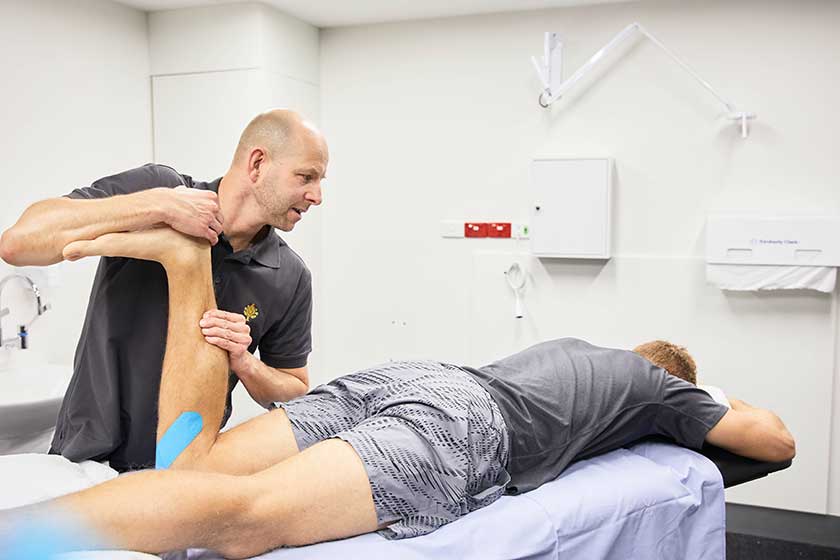1. Broken bones
As with all sports, the most common injury people playing AFL at the amateur level are likely to experience are fractures. These can occur through falls, landing awkwardly and contact with people (or even goal posts).
Wrist and hand fractures are the most common sites for broken bones followed by knees and lower legs.
With the growing attention on concussion in contact sports like Australian rules football, it is also important to note that fractures to the head are just as common as knee and leg fractures.
Common areas for broken bones to occur:
- Wrist and hand – 30%
- Knee and lower leg – 21%
- Head – 21%
- Elbow and forearm – 16%
- Shoulder and upper arm – 8%
- Others (trunk, neck, ankle and foot, hip and thigh) – 6%
2. Soft-tissue injuries
A soft-tissue injury occurs when you damage your muscles, ligaments or tendons. These often occur when you sprain or strain a joint or muscle, and we grade these depending on their severity.
Soft-tissue injuries such as torn or strained calves and hamstrings are the second most common ailment that affects your average football player.
At the professional level, hamstring strains (a type of soft-tissue injury) are the most common injury in AFL (source).
3. Dislocations
A dislocation might not sound quite as serious as the above two injuries but they are painful and unfortunately not uncommon in football.
Dislocations can range from dislocated fingers, to dislocated shoulders or knee caps which can be very painful particularly if the joint does not go back into the normal position quickly.
4. Intracranial injury
Head injuries are a real concern in all contact sport, including Australian rules football.
The data shows that head injuries are not uncommon, and can range from severe to mild.
If concussion occurs in a football game, all players and support staff should follow the concussion protocols. You can find out more at concussion in sport.
Football injuries that need hospital stays
The good news is that for most injuries that occur as a result of playing AFL, the average hospital stay is just over one night.
The most serious injuries occur to the head.
If you injure yourself playing sport and need urgent attention, call an ambulance or go to your nearest Emergency Department. If you are worried about ongoing pain caused by a less serious injury, go to your GP who can refer you to care with an experienced orthopaedic surgeon.
Data taken from the Australian Institute of Health and Welfare Australian sports injury hospitalisations report 2011/2012.


